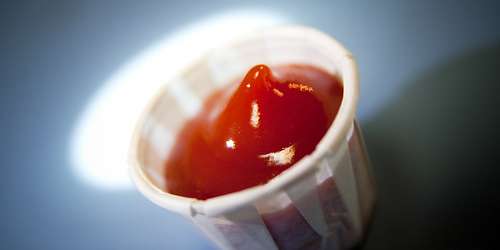
Spectrophotometric Grading of Tomato Products
While raw tomatoes come in a wide variety of colors and flavors, USDA grading of tomato products such as pastes, sauces, ketchups, and juices depends on adherence to specific color standards to indicate quality. Each grade has exact color ranges and where a product falls within that range can have a significant impact on consumer perception and success in the marketplace. Although archaic visual comparison methods are still in use, spectrophotometry has long been utilized to provide more precise grading and the USDA is now encouraging producers to turn to electronic color measurement. HunterLab’s spectrophotometric instruments and conversion formulas are recognized by the USDA as the premiere tools available for color classification of tomato products.
Although a number of multi-purpose HunterLab instruments meet the criteria for tomato evaluation reliability, we also produce a dedicated tomato spectrophotometer: the ColorFlex L2 Tomato. By combining optimal 45º/0º geometry with specialized firmware for the analysis of fresh and processed tomatoes, the ColorFlex L2 Tomato allows for easy determination of tomato color classification. Scales include:
- Fresh Tomato Index (FTCI)
- Tomato Paste Score (TPS)
- Tomato Sauce Score (TSS)
- Tomato Catsup Score (TCS)
- Tomato Juice Score (TJS)
- a/b ratio
HunterLab also offers a tomato tile to ensure accurate, repeatable measurement over time and hitch standardization between instruments, optimizing tomato color analysis and grading throughout production. In addition to measuring processed tomato products, raw tomatoes may also be measured to indicate ripeness, freshness, and overall quality.

Lycopene content increases as tomatoes ripen and is primarily concentrated in the skin of the fruit. Image Source: Unsplash user Deniz Altinda

